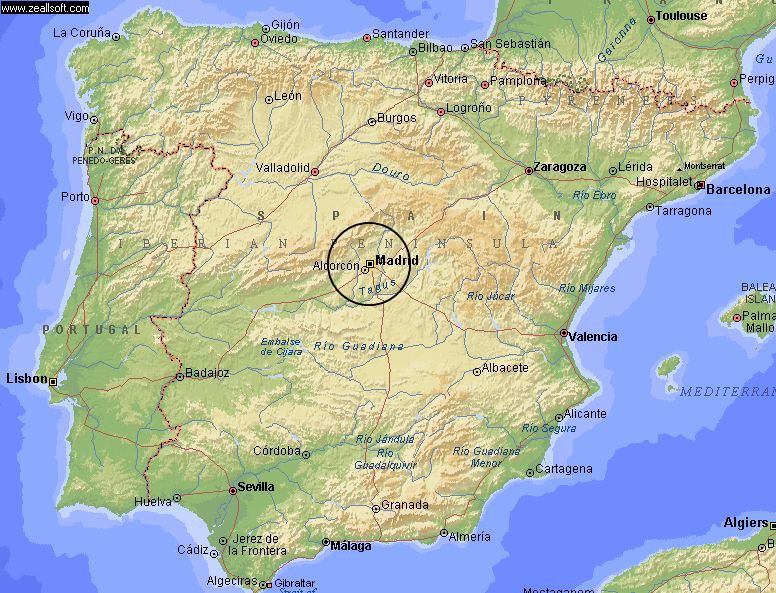
TARGET 080625
AH! A breath of fresh air.
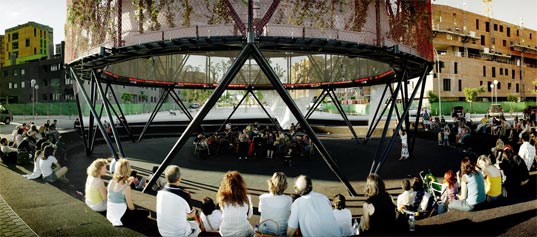
The winning entry was submitted by Urban Ecosystems and is loosely titled ‘The Air Tree.’ Their proposal was to create three open air pavilions in the space which would each be programmed with a different activity chosen by the users themselves. The pavilions were designed to be a “prosthesis” around which social activities, biological growth, and architectural edifice could grow. The pavilions would begin their life as nodes for activity within the new urban centres. Then, over time, as the surrounding context developed and grew, the pavilions would lose their character as node and instead become voids within the urban fabric. The structures will eventually be deconstructed and recycled.
The air trees themselves are designed to be lightweight, deconstructable, and produce their own electrical energy. All three are designed using one rough kit of design elements that then are skinned to perform specific tasks depending on the activity taking place at that particular pavilion.
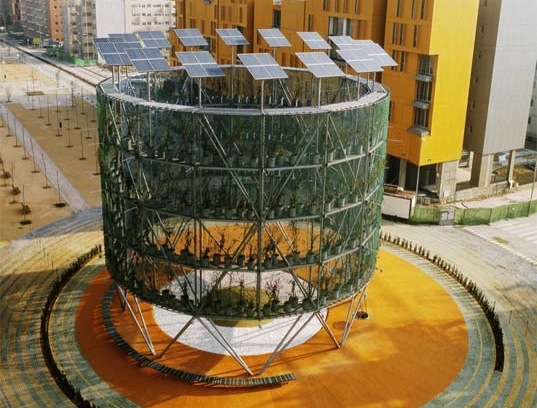
Photovoltaic panels mounted to the top of each structure produce energy used to operate the air trees. Surplus electricity is sold back to the grid and the proceeds are used to help maintain the urban park.
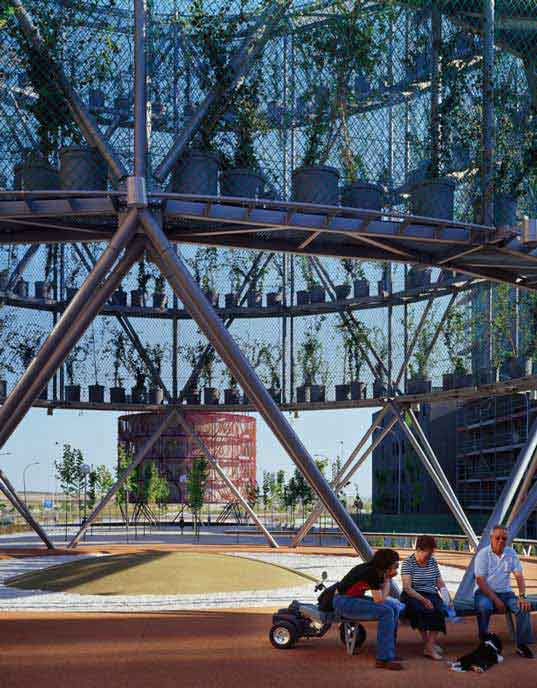
Each air tree was also designed to condition the surrounding environment. Because the designers realized that the air trees would stand solitary for many years until the surrounding trees and vegetation grew, the designers planned for the air trees to house their own plantings. Urban Ecosystems therefore placed hundreds of small trees in soil on the perimeter of the air trees.
“…Simple air conditioning systems installed in the air tree. They are evapotranspirators. This is a natural way to air condition a space, not a part of commercial strategy. Rather, it creates naturally conditioned spaces between 8-10°C cooler than the surrounding streets where the residents can take active part in the public domain."
The project is currently under construction. All three pavilions have been built and work continues on the overall masterplan for the Eco Boulevard and the remainder of the Vallecas project.
More feedback pictues of the air trees

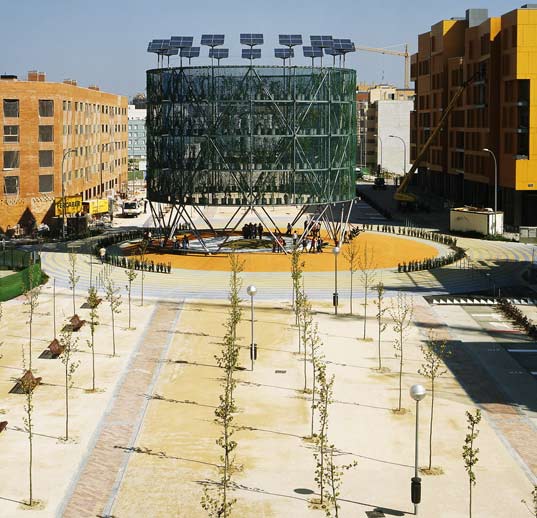
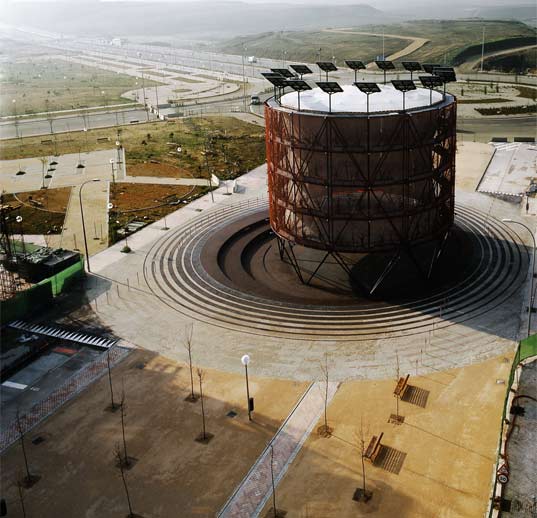
Many thanks to Ray McClure and Keythe Karpinski
for suggesting this target.
FEEDBACK MAP
